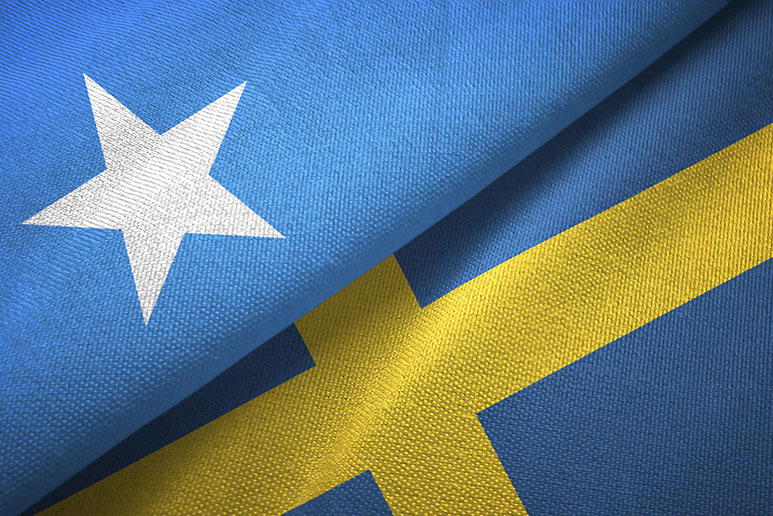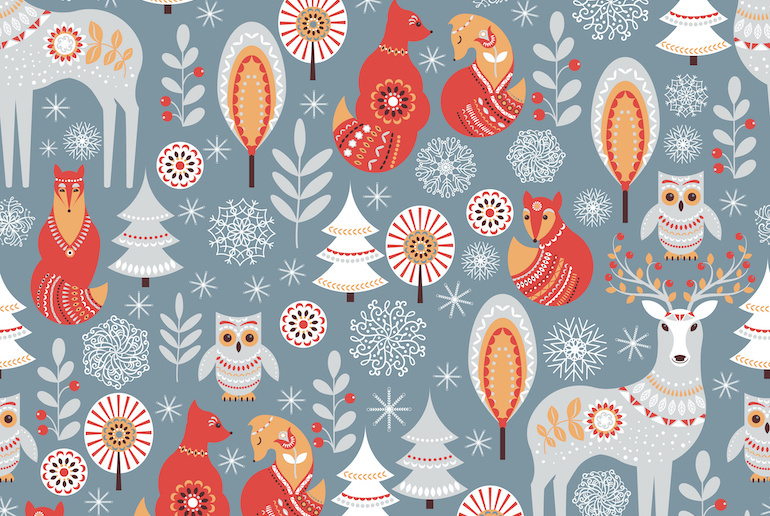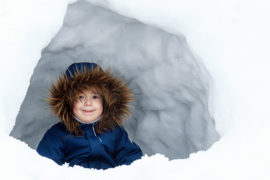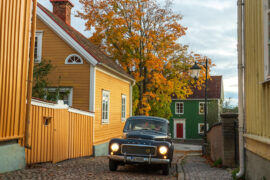Swedish is the official language of Sweden and is predominantly spoken throughout Sweden.
However, this beautiful Germanic language is spoken in several other countries as well.
With nearly 11 million speakers worldwide, Swedish is one of the 100 most spoken languages in the world, ranks the 14th most spoken language in Europe, and is also the most spoken Scandinavian language.

Where do people speak Swedish?
Naturally, more than 90 percent of Swedish speakers live in Sweden, but there are more scattered all over the world.
A few of the world’s Swedish-speaking hotspots include Finland, the USA, Canada, and Denmark.
In the United States, there is a large pocket of Swedish descendants who live in Minnesota. This is due to a mass migration of Swedes in the 19th century, mostly consisting of farmers and folks searching for new opportunities.
Over a quarter of a million Swedes migrated to the USA, and to this day there is still some Swedish spoken there.
Here is a breakdown of where most of the Swedish speakers live:
| Country | Number of Swedish speakers |
| Sweden | 10,500,000 |
| Finland (including Åland) | 263,000 |
| USA | 76,000 |
| Canada | 17,000 |
| Denmark | 17,000 |
| Norway | 16,000 |
| Estonia | 13,990 |
How many people speak Swedish in Finland?
As the table above shows, Finland has the most Swedish speakers outside of Sweden.
Being the second official language of Finland, Swedish is widely spoken throughout the country. Most of the Swedish-speaking population is concentrated near the western and southern coasts.
Many Finnish students are taught Swedish from a young age, and most schools even require children to learn it during primary school.
How many people study Swedish?
It is estimated that around 40,000 people are studying Swedish at a university.
It is taught at over 200 colleges worldwide and is the most studied of the Scandinavian languages.
Furthermore, there are currently 1.39 million Swedish learners on Duolingo – one of the world’s most popular language-learning apps. Many of these are migrants and refugees arriving in Sweden for the first time, from countries as diverse as Somalia, the USA and Iran.

What other languages are spoken in Sweden?
Besides Swedish, there are many other languages spoken in Sweden.
English is the second most spoken language, and Swedes are known for being fantastic English speakers.
It’s estimated that around 90% of Swedes are fluent in English, especially the younger generations.
It’s safe to say that most Swedes are bilingual in at least one language. Most Swedes try to learn a third language in school, usually German, French, or Spanish.
According the Swedish Parliament website, there are an additional five national minority languages in Sweden. These are:
- Finnish
- Meänkieli (Tornedal Finnish)
- Yiddish
- Romani
- Sami
Are there dialects in Sweden?
The Swedish language has several distinct dialects throughout the country. Each dialect consists of unique traits that Swedes are usually able to tell apart:
Skåne
In Skåne, the region on Sweden’s southernmost tip, you will find the ‘Skånska’ dialect.
This dialect may be considered one of the most unique dialects of Swedish.
Skånska is heavily influenced by Danish and is much more guttural than what you would hear in the north.
In fact, some Swedes outside of Skåne (and especially many foreigners who learn Swedish) claim that Skånska can be difficult to understand! It truly is one of the most distinctive Swedish accents.
Northern Sweden
Norrbotten, Lappland, Ångermanland, and Västerbotten are all located in the far north, where the dialects are quite different from the rest of Sweden but are similar to each other.
So, if a Stockholmer were to meet someone from one of these areas, they wouldn’t be able to distinguish exactly which area they are from but could immediately recognize that they are from the north.
Additionally, one of the most recognizable quirks of the Northern dialects is that they inhale quickly when agreeing with someone or saying “yes.” This noise replaces any actual words and is a feature throughout Sweden, but is definitely most common in northern parts.

Gothenburg
Swedish is known for sounding very ‘sing-songy’ when spoken. In Gothenburg, you may find the sing-songy dialect is more pronounced, and their words go up and down a lot (we won’t mention the Swedish chef from the muppets, but some people do).
Swedes consider the Gothenburg accent to sound happier as well, which may be influenced by Norwegian – and this is also reflected in the fact that Gothenburg residents are famous for their Göteborgshumor (in other words, they like dad jokes).
Stockholm
Stockholmers have a dialect of their own, which some would consider sounding more ‘posh’ – a little bit like ‘Received Pronunciation‘ in England.
Another major characteristic of a Stockholm accent is that they love slang and to shorten words. For example, “Kungsträdgården,” or the king’s garden, often gets shortened to “Kungsan.” Another example is that “Tunnelbanan” (Stockholm’s subway) often gets shortened to “Tubben.”
Is Swedish dying out?
Swedish is definitely not a dying language. Yes, Swedes are learning and using English frequently, but the Swedish language continues to be taught to the new generations and almost all Swedish households speak Swedish on a day-to-day basis, rather than English. That doesn’t stop English words (and specifically, Americanisms) slipping into a surprising number of sentences though, especially among folks under the age of about 40.
Swedish is safe in other ways, too. Sweden is filled with Swedish art, literature, media, music, and movies. With 11 million people speaking the language, it is certainly not dying or even close to becoming endangered. This beautiful and unique language will stay alive and thriving for a long time!
See also:
Tips for learning Swedish
All you need to know about the Swedish alphabet
Popular Swedish names for boys









